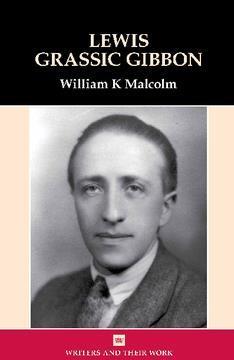The celebrated works of north-east author Lewis Grassic Gibbon are being highlighted in a new book.
Titles penned by Aberdeenshire-born scribe, including Sunset Song and Grey Granite, adorn bookshelves across the world.
They have been adapted for the stage, television and film and are often regarded as among the best fiction ever produced in the country.
First Minister Nicola Sturgeon is among Sunset Song’s biggest fans, citing it as her favourite novel and writing the introduction for a reissue this year.
Now, a Gibbon “obsessive” is preparing for the publication of a new book exploring the man behind the words – and how he came to cement his place in the literary world.
William K Malcolm, from Aberlour, has spent decades studying and teaching the work of Gibbon – real name James Leslie Mitchell – and has acted as the literary director of the Grassic Gibbon Centre in Arbuthnott since its inception in 1992.
His research into the author led him to editing the Penguin Classics version of Sunset Song and becoming an honorary fellow of the Association for Scottish Literary Studies.
And last year Gibbon’s family appointed him a joint administrator of the writer’s literary estate following the death of his son.
Mr Malcolm’s latest study, simply titled Lewis Grassic Gibbon, is part of a 400-strong series called Writers And Their Work, which has been published by Liverpool University Press since 1994.
The 192-page book looks at the 17 titles Gibbon published under both his pseudonym and real name between 1928 and 1934, setting each in their “tumultuous” historical context.
“Gibbon’s achievement is too often devalued by his representation as a great Scottish writer,” Mr Malcolm added.
“He is a truly great writer by any objective criteria, in terms of his timeless ideas and outlook, his humanitarianism, his passionate championing of the underdog, his feminist sympathies, and his understanding of the profound importance of the natural environment.
“He’s now recognised across the world as a writer of the very highest order, is acclaimed as a leading figure in the modernist movement in fiction, alongside James Joyce, Virginia Woolf and William Faulkner.
“Most importantly, as reader polls repeatedly indicate, Gibbon is an author who reaches ordinary people with the sheer power of his writing, which gives his work a unique resonance.”
Earlier this year, a Spanish translation of Sunset Song hit bookshops on the continent – adding to versions interpreted for speakers of Polish, Czech, Japanese and Russian, among others.












